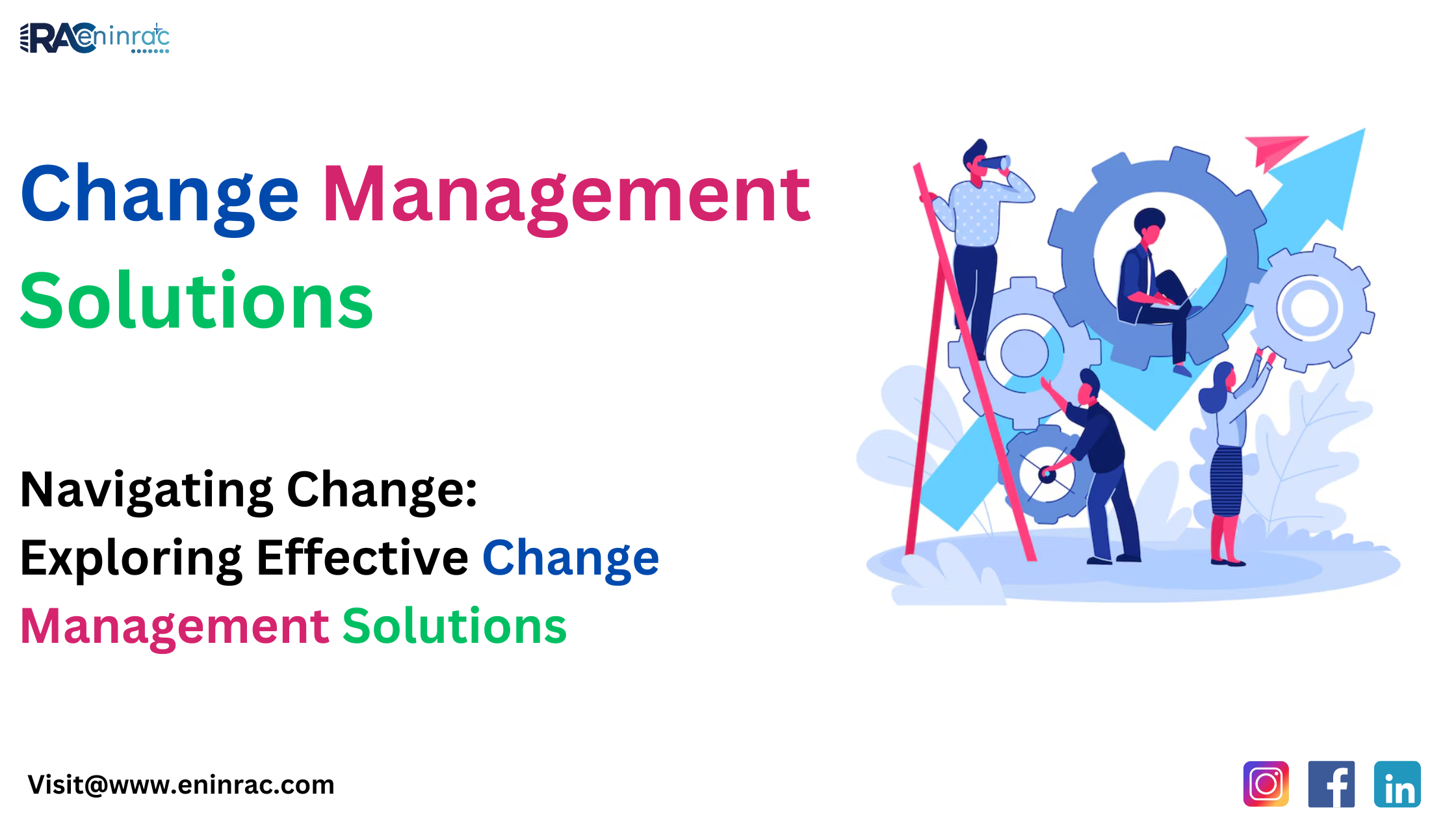Introduction
Change is inevitable in any organization, but managing it effectively is crucial for success. In today's dynamic business landscape, change management solutions play a pivotal role in guiding companies through transitions, whether it's implementing new technologies, restructuring, or adapting to market shifts. In this blog, we'll delve into the realm of change management, exploring its significance, key strategies, and best practices to facilitate smooth transitions and foster organizational resilience.
Understanding Change Management
Change management is the structured approach to transitioning individuals, teams, and organizations from a current state to a desired future state. It involves meticulous planning, communication, and execution to minimize resistance and maximize adoption. At its core, change management aims to facilitate smooth transitions while mitigating disruption and ensuring continuity of operations.
The Importance of Change Management Solutions
In today's fast-paced business environment, organizations must continuously evolve to stay competitive. However, change can be met with resistance, leading to project delays, decreased productivity, and employee dissatisfaction. Effective change management solutions mitigate these risks by fostering a culture of openness, collaboration, and adaptability.
Key Components of Change Management Solutions
- Clear Communication: Transparent communication is fundamental to successful change management. Leaders must articulate the rationale behind changes, address concerns, and keep stakeholders informed throughout the process.
- Engagement and Participation: Involving employees in the change process fosters a sense of ownership and commitment. Encouraging feedback, soliciting input, and involving key stakeholders in decision-making builds trust and promotes buy-in.
- Strategic Planning: Change initiatives require careful planning and execution. Establishing clear goals, timelines, and milestones ensures alignment with organizational objectives and facilitates progress tracking.
- Training and Development: Providing adequate training and resources equips employees with the skills and knowledge needed to adapt to new processes or technologies. Investing in training initiatives demonstrates a commitment to employee growth and development.
Common Challenges in Change Management
Despite its importance, change management is not without its challenges. Common obstacles include resistance from employees, lack of leadership support, inadequate resources, and poor communication. Addressing these challenges requires proactive measures, including stakeholder engagement, leadership alignment, and tailored communication strategies.
Overcoming Resistance to Change
Resistance to change is natural, but it can derail even the most well-planned initiatives. To overcome resistance, organizations must foster a culture of trust, transparency, and inclusivity. Providing opportunities for open dialogue, addressing concerns, and highlighting the benefits of change can help alleviate resistance and garner support from employees.
Leveraging Technology in Change Management
Technology plays a crucial role in facilitating change management efforts. Tools such as project management software, collaboration platforms, and communication tools streamline processes, enhance transparency, and enable remote collaboration. Leveraging technology not only improves efficiency but also promotes agility and responsiveness in managing change.
Best Practices for Successful Change Management
- Leadership Commitment: Visible support from leadership is essential for driving change initiatives forward. Leaders should champion change, communicate its importance, and lead by example to inspire confidence and commitment from employees.
- Employee Engagement: Engaging employees throughout the change process fosters a sense of ownership and commitment. Soliciting feedback, involving employees in decision-making, and recognizing their contributions cultivates a positive change culture.
- Continuous Communication: Communication is key to effective change management. Leaders should communicate frequently, openly, and transparently, addressing concerns, providing updates, and celebrating milestones to keep stakeholders informed and engaged.
- Flexibility and Adaptability: Change is dynamic, and flexibility is essential for navigating unforeseen challenges and opportunities. Organizations must remain agile and adaptable, adjusting strategies and plans as needed to accommodate changing circumstances.
Conclusion
Change management is a critical component of organizational success, enabling companies to adapt, innovate, and thrive in today's rapidly evolving business landscape. By embracing change management solutions, organizations can minimize resistance, maximize adoption, and accelerate their journey towards achieving strategic objectives. With clear communication, proactive engagement, and effective leadership, companies can navigate change with confidence and resilience, positioning themselves for long-term success.





